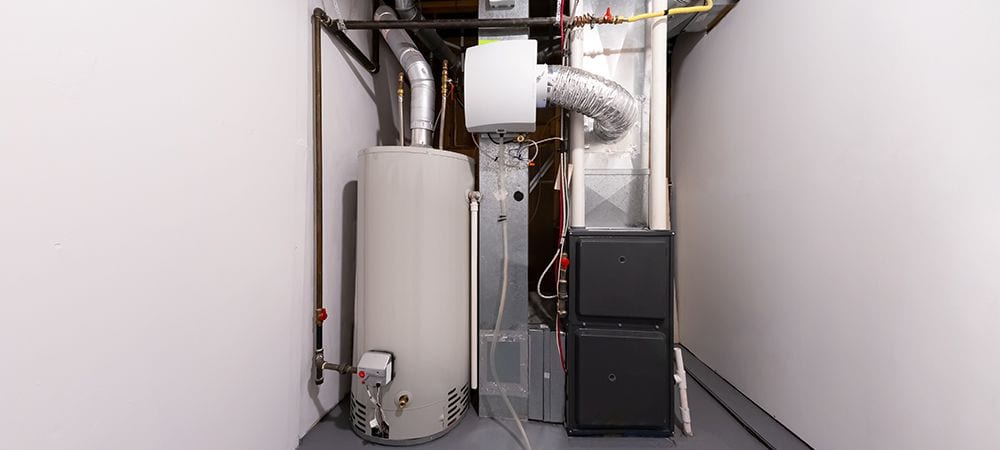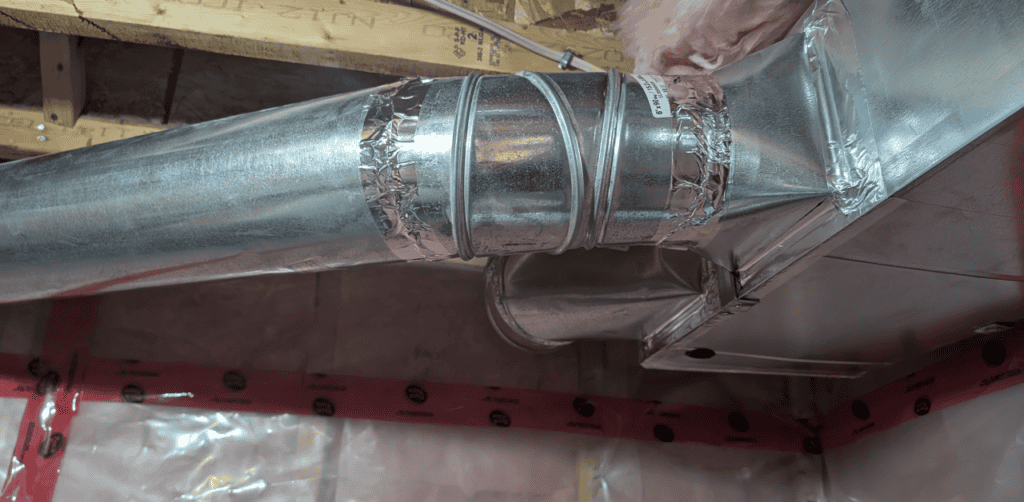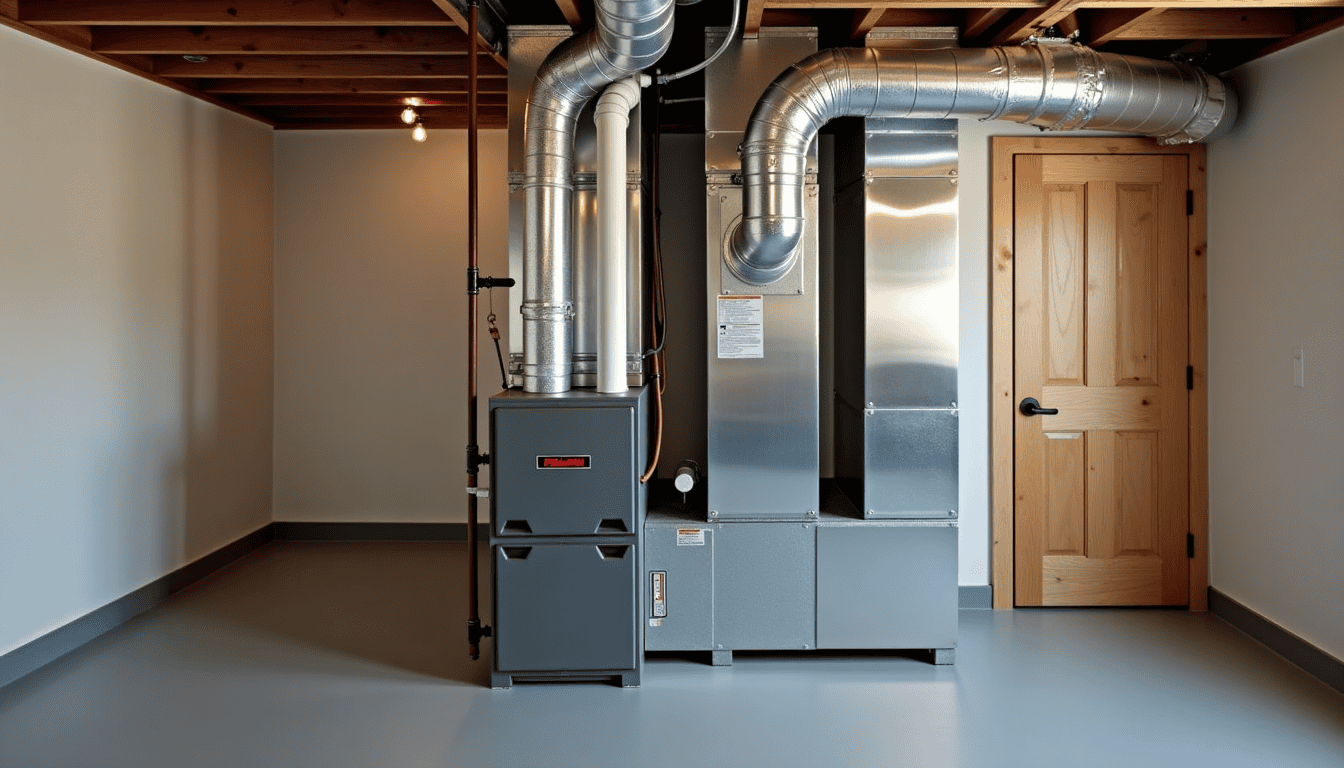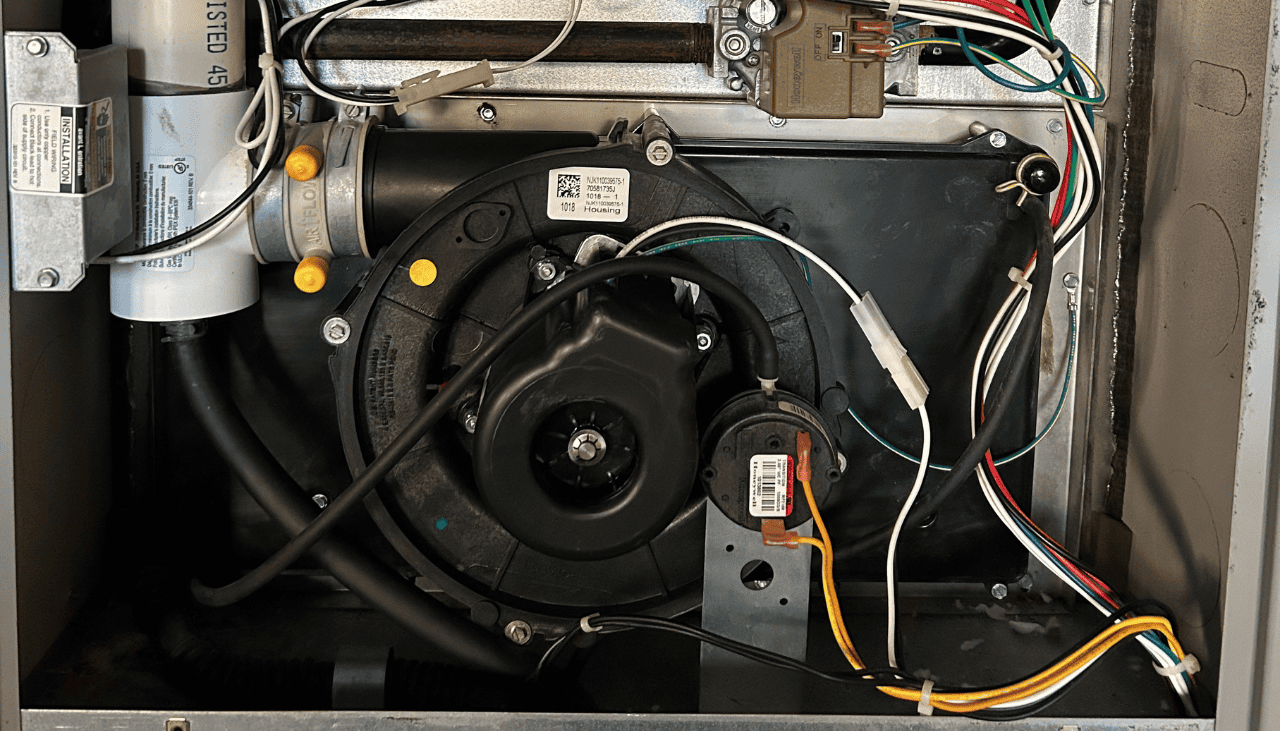To solve uneven heating in your house, start by identifying the root causes. Have your HVAC system professionally inspected and check for ductwork issues. Improve air distribution by balancing vents and replacing filters regularly. Enhance insulation and seal air leaks to prevent heat loss.
Consider smart technology like multi-sensor thermostats and zoned heating systems for optimal control. Conduct an energy audit to pinpoint specific problems and get tailored solutions. Upgrade to a high-efficiency furnace if needed. Regular maintenance and whole-house efficiency improvements will guarantee long-term comfort and energy savings.
Discover more ways to create a perfectly balanced home environment and address home heating problems.
Key Takeaways
- Conduct a professional energy audit to identify sources of uneven heating in your house and receive tailored recommendations.
- Improve insulation and seal air leaks in walls, attics, and around windows and doors to combat uneven temperature distribution.
- Install smart thermostats and zoning systems to control temperatures in different areas of your home and improve heat distribution.
- Upgrade your HVAC system and ductwork to ensure efficient air distribution throughout the house and fix uneven heating.
- Implement regular maintenance and inspections to maintain optimal performance of your heating system and prevent furnace not heating house issues.
Identifying Sources of Uneven Heating
To solve uneven heating in your house, you’ll need to identify its sources. Start by checking your HVAC system’s performance and efficiency. Professional technicians can perform detailed inspections to guarantee ideal functioning and detect any potential issues.
Then, inspect your ductwork for leaks or blockages, and make certain your home’s insulation is sufficient throughout to prevent uneven heat distribution.
Assessing HVAC System Performance

Efficiency is key when evaluating your HVAC system’s performance to identify sources of uneven heating. Check your thermostat settings and guarantee proper ductwork function.
Use energy audit tools to measure temperature differentials between rooms. Assess your air distribution system for leaks or blockages. Look for inconsistent room temperatures, which may indicate issues.
Maximizing system performance can help solve uneven heating problems and improve overall comfort in your home.
Evaluating Ductwork and Air Distribution
Leaky ducts and poor air distribution are often the culprits behind uneven home heating. To identify these issues, check for:
| Problem | Signs | Solution |
|---|---|---|
| Leaky ducts | High energy bills | Duct sealing products |
| Poorly designed duct layout | Cold spots | Professional redesign |
| Blocked air vents | Weak airflow | Clear obstructions |
| Uninsulated ductwork | Temperature fluctuations | Add insulation |
| Damaged or crushed ducts | Noisy operation | Repair or replace |
Addressing these problems can improve air circulation and guarantee even air distribution throughout your home, helping to fix uneven heating in your house.
Examining Insulation and Building Envelopes
While addressing ductwork issues can meaningfully improve heat distribution, your home’s insulation and building envelope play equally important roles in maintaining consistent temperatures.
Inadequate insulation in walls, attics, and crawlspaces leads to cold spots and uneven heating. Check for drafts from doors and windows, gaps in wall insulation, and thermal bridging issues.
Proper insulation and a well-sealed building envelope are essential for consistent warmth and a draft-free environment throughout your home, helping to prevent uneven temperatures in the house.
Improving Air Distribution and Flow

To improve air distribution and flow in your home, start by balancing your air vents and registers. Regularly replacing air filters is vital for ideal airflow and heating efficiency, as clean filters improve indoor air quality and reduce strain on your furnace.
You’ll want to check for and fix any ductwork issues or leaks that could be hampering airflow. Consider implementing zoned heating solutions to target specific areas of your house more effectively and address uneven heat distribution.
Balancing Air Vents and Registers
Optimizing your home’s heating system starts with balancing air vents and registers. To combat the imbalanced thermal distribution and fluctuating indoor climate, adjust vent openings in warmer and cooler areas. This improves room air circulation and creates consistent temperatures.
Inspect and clean vents regularly to prevent dust buildup. Don’t overlook dirty air filters or a faulty blower motor, which can affect the vent and register system’s performance. Consult an HVAC pro for ideal results in addressing uneven heating in your house.
Addressing Ductwork Issues and Leaks
A significant portion of uneven home heating can be traced back to ductwork issues and leaks. You’re likely losing up to 30% of heated air before it reaches your rooms.
Blocked air vents and damaged ductwork create airflow imbalances, causing hot and cold spots. Regular ductwork inspection and HVAC maintenance are pivotal.
Duct sealing can improve heat distribution and efficiency. Don’t overlook these issues when addressing uneven heating in your home and trying to fix uneven heating in your house.
Implementing Zoned Heating Solutions
While addressing ductwork issues is essential, implementing zoned heating solutions can dramatically improve air distribution and flow throughout your home. Zoned heating systems use smart vents and zone control to enhance thermal comfort and heat distribution.
You’ll enjoy programmable temperature settings for each area, boosting energy efficiency. With strategically placed dampers and zoned thermostats, you can customize comfort levels and eliminate hot and cold spots. Your HVAC system will work smarter, not harder, helping to solve uneven heating problems.
Enhancing Home Insulation and Sealing
You’ll want to focus on upgrading your home’s insulation and sealing to tackle uneven heating. Start by improving attic and wall insulation to recommended R-values for your climate, which can make a big difference in maintaining consistent temperatures.
Proper insulation not only helps with temperature consistency but also improves overall energy efficiency and can reduce the workload on your furnace. Don’t forget to seal air leaks around windows and doors, as this will reduce drafts and enhance your home’s overall thermal performance, addressing uneven temperature distribution.
Upgrading Attic and Wall Insulation
Upgrading your attic and wall insulation is a crucial step in solving uneven home heating issues. Suitable insulation brands can substantially reduce heat loss and improve effective heat distribution.
Choose materials with the right r-value for your climate to enhance your home’s thermal envelope. Insulate attics and walls to create a more consistent temperature throughout your living spaces.
Professional installation guarantees ideal insulation effectiveness and long-term energy savings, helping to fix uneven heating in your house.
Sealing Air Leaks and Drafts
Tackle air leaks and drafts to complement your insulation efforts and create a more comfortable, energy-efficient home. Sealing gaps reduces air infiltration, maintaining your thermal envelope.
Consider these steps:
- Identify problem areas with an energy audit
- Apply weatherstripping around windows and doors
- Use caulking to seal stationary joints and cracks
- Address other entry points to lower your air leakage rate
Professional assessment can guide you in effectively sealing your home for ideal comfort and to prevent uneven heat distribution.
Improving Window and Door Efficiency
Windows and doors are often the weakest links in a home’s thermal envelope. To improve their efficiency, focus on weatherstripping and caulking.
Apply weatherstripping to seal air leaks around movable joints, enhancing heat retention. Use caulk to fill gaps around stationary joints, boosting energy efficiency.
Don’t forget to address drafts at entry points. These simple steps can substantially improve your home’s overall thermal performance and insulation, helping to solve uneven heating problems.
Smart Technology for Balanced Heating
You can greatly improve your home’s heating balance with smart technology. Programmable or smart thermostats offer better control and can be upgraded for enhanced functionality.
Install multi-sensor thermostats to monitor temperatures in different areas and adjust heating accordingly. Use smart vents and zoning systems to direct airflow where needed, and integrate your HVAC with home automation for seamless control and optimization to address uneven heating in your house.
Installing Multi-Sensor Thermostats
One of the most innovative solutions for uneven home heating is the installation of multi-sensor thermostats. These smart devices use multiple temperature and humidity sensors to detect variations across your home, optimizing energy consumption and improving comfort.
Key benefits of multi-sensor thermostats include:
- Zoned heating control
- Improved thermal dynamics
- Better air movement management
- Precise relative humidity monitoring
You’ll enjoy more consistent temperatures throughout your house, addressing common issues like cold spots and overheated areas, effectively improving the heat distribution in your home.
Utilizing Smart Vents and Zoning Systems
Building on the concept of smart temperature control, smart vents and zoning systems take home heating optimization to the next level. These technologies allow for zoned heating, reducing heat loss and improving efficiency.
Smart vents automatically adjust airflow based on room occupancy and temperature, while zoning systems enable independent temperature control in different areas. When integrated with smart thermostats, they create an all-encompassing temperature control system that optimizes your blower’s cubic feet per minute output for balanced heating throughout your home, helping to fix uneven heating in your house.
Integrating HVAC with Home Automation
While smart vents and zoning systems offer significant improvements, integrating your HVAC system with home automation takes balanced heating to new heights. Smart home integration enhances your comfort and efficiency through:
- Programmable settings for ideal temperature balance
- Remote access to adjust heating from anywhere
- Voice command compatibility for hands-free control
- Indoor air quality monitoring to improve overall home efficiency
These features help combat thermal stratification, ensuring even heating throughout your home and addressing uneven temperature distribution.
Professional Assessment and Long-Term Solutions
You’ll benefit from a professional home energy assessment to identify the root causes of uneven heating. Consider upgrading your HVAC system or implementing zoning for better temperature control.
Furnace installation costs can vary widely, but investing in an efficient model can lead to long-term savings. Look into whole-house efficiency improvements, like enhanced insulation or ductwork modifications, to achieve long-term comfort and energy savings, and to fix uneven heating in your house.
Conducting Comprehensive Energy Audits
A home’s energy efficiency can be a mystery, but a thorough energy audit sheds light on your dwelling’s performance. It identifies issues causing irregular house warmth, like undersized heating units or poor window insulation.
A professional audit examines:
- Insulation quality
- Air sealing effectiveness
- HVAC system efficiency
- Other energy-impacting factors
You’ll receive tailored recommendations to improve comfort and reduce energy use. Regular audits help monitor progress and guide future upgrades for ongoing efficiency and to address uneven heating in your house.
Considering HVAC System Upgrades
When your home struggles with uneven heating, it’s time to ponder HVAC system upgrades as a long-term solution. Consult HVAC pros to assess your home’s needs, considering factors like multi-story home design, basement or crawl space, shade from trees or buildings, and wind exposure.
They’ll recommend suitable upgrades, such as high-efficiency furnaces with better AFUE ratings or zoned systems. Look for Energy Star certification and consider SEER ratings for ideal performance. These upgrades can help solve uneven heating problems and improve overall heat distribution in your home.
Implementing Whole-House Efficiency Improvements
To achieve lasting results in resolving uneven heating issues, it’s critical to implement whole-house efficiency improvements. Consider these key steps:
- Schedule a professional energy audit
- Upgrade attic insulation to ideal R-values
- Install a smart thermostat with zoning capabilities
- Seal air leaks around windows and doors
These actions address heat transfer principles, improve system control, and boost energy conservation.
Regular maintenance and annual professional inspections will maintain continued comfort and efficiency in your home, helping to prevent uneven temperatures in the house.















